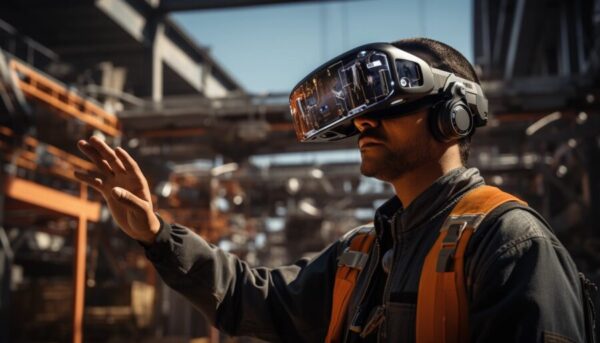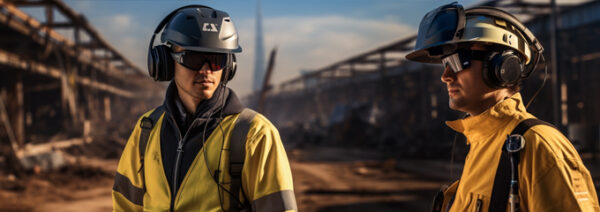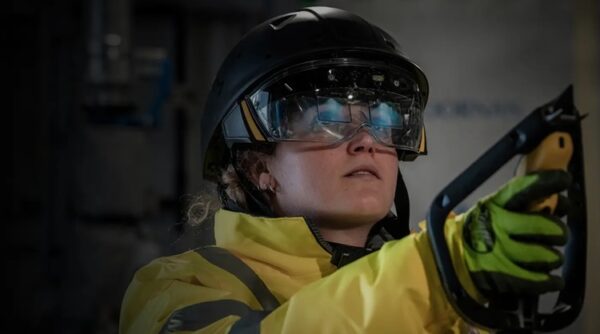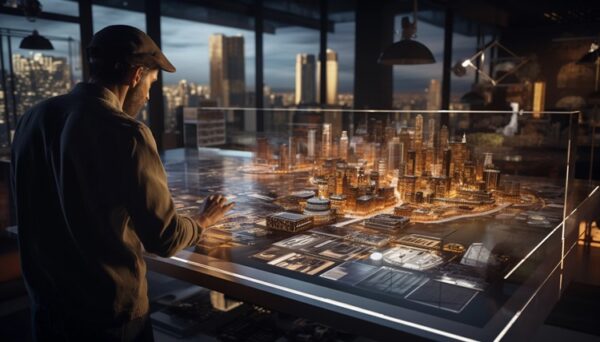
Welcome to the second part in this series that takes a look at some of the available XR tools for the Architecture, Engineering, and Construction (AEC) industry, as well as the trends that this industry is witnessing thanks to the rise of emerging technologies such as augmented, virtual and mixed realtiy (AR, VR and MR – collectively XR).
Part 1 in the series explored how XR is transforming the AEC sector, and highlighted some of the best AR and VR tools that are currently available to AEC professionals. In this post, we will look at more tools, in particular those that have been designed with a very specific use case in mind, and will also examine what the future may hold for XR technology within the AEC space.
| Tools, software, platforms and contemporary XR solutions for AEC professionals mentioned in this post: |
| Argyle Arkio BIM Holoview SiteLink Trimble – FieldLink MR XYZ Reality |
Market differentiators: stand out in the crowd
While many XR solutions providers are on board with most of the trends noted in part 1, a handful have staked out a niche offering that makes them attractive and well-suited to specific use cases, including:
Authoring and collaboration
Many XR tools support collaboration in some fashion, whether synchronous or asynchronous, but Arkio takes that collaboration the next level, supporting intuitive interactions among multiple participants to author design geometry in real-time. While this immersive creation is well suited to conceptual and schematic design phases, it also has a place on the job site, where builders are often lacking digital tools to sketch or mockup details as they plan their means and methods.
Tie to layout
XR in AEC rarely exists in a vacuum, and its use is often synergistic with other emerging technologies. If XR is good at confirming if facility assets have been installed in the proper size, quantity, and location (and it is!), other technologies like robotic “total stations” are key in determining where those assets go in the first place. Here, there is no better market leader than Trimble, whose FieldLink MR plays a unique role within an entire portfolio of hardware and software solutions and integrated workflows that leverages the accuracy of professional survey equipment and the intuitive experience of XR to deliver a best-in-class solution for construction layout.
Tie to reality capture
Layout isn’t the only technology to complement XR. Reality capture tools are the complementary technology to XR, as co-enablers of “digital twins.” For the most part, reality capture workflows are handled by a different sector of solutions providers, and anyone trying to harness the best of recap and XR must chart a frustrating course of confusing and not-always-compatible standards. Not so with SiteLink, whose core differentiator is its ability to bundle BIM and data, and enable users to share both seamlessly between the office and job site.
Progress tracking
One of the more interesting directions that XR software companies are exploring is allowing AEC professionals to track progress of construction, giving contractors and their customers an objective view of what is installed, and whether it’s ahead, behind, or on time. Here, XYZ Reality stands out, with a managed service including dedicated engineers to regularly update and compare what they see in the field to the BIM they see in XR.
Safety
Safety is of paramount concern in construction, and the use of XR on the job site is no exception. While AR hardware vendors like Magic Leap tout enterprise use cases, their devices are not rated for construction like Microsoft’s HoloLens is. And safety risks only increase with video passthrough AR/MR devices such as Meta’s Quest line of headsets. Two XR software providers stand out here: XYZ Reality, who offer the “Atom,” a purpose-built display solution specifically for construction and managed by dedicated on-site staff; and Argyle, whose “wireframe” edge-lit rendering allows its users to more easily see real-world job-site conditions through the noise of overlaid BIM data, a key complement to its stable tracking and data persistence.
Multi-modal experiences
The cost of immersive XR can be a high barrier to entry and to scale for many AEC firms, and not every use case demands wearing a display on your face to be effective. While many of the XR solutions providers offer an experience that extends beyond a head-mounted display, two companies really stand out for their cross-platform, inter-modal approach to XR. Trimble’s connected portfolio of XR solutions works across the HoloLens (AR/MR), Quest devices (VR/MR), iPhones and iPads, and desktop. And Arkio works across Quest devices (VR/MR), iPhones and iPads, and desktop as well, where the experience of the user is one of a collaborative participant, not a mere observer.

Looking forward: what’s next
XR tools created to serve the AEC industry have come a long way in recent years and will continue to evolve in the future. There will need to be significant improvements in some aspects of the solutions to enable widespread adoption and returns on the investment of these tools. Some of the features and capabilities that the industry will need, include:
Effortless, marker-less registration and alignment
Professionals need to be able to experience spatialized data, in the right place at all times – accurately, persistently, and with minimal effort to register virtual and physical environments together. Argyle in particular has made great strides in this arena, and has shown the promise of consistent, persistent, and stable data alignment at a large scale, but the XR solutions at-large have a ways to go before we overcome this barrier to widespread adoption.
Fabrication, assembly, and installation
XYZ Reality and Trimble have led the way in accurate tracking, and SiteLink and BIM Holoview have shown great promise in supporting specialized rendering and occlusion of hidden geometry. However, almost nobody has offered these features to truly enable easy, robust, accurate, and dependable construction installation use cases in the fabrication shop or on the job site. This is an area for tremendous opportunity that could ultimately provide the “killer app” for XR in AEC.

Sectioning
Almost no XR solutions providers to-date seem to recognize the critical importance of enabling stakeholders to rapidly and intuitively create and view 2-D and 3-D sections of their data. Yet, designers and builders alike are accustomed to (dependent upon?) being able to review, align, compare, contrast, and relate multiple section drawings and detail views, to isolate and understand design intent, whether in the office, the job trailer, or the construction site. No XR tool is complete without robust and thoughtfully-executed sectioning features. Here, too, the solution to get this right first will almost certainly skip to the front of the line.
Sensible scales
Whether viewing molecules, galaxies, or buildings, humans relate to data and objects in three human-centric scales: true 1:1 scale, body-scale, and hand-scale. This is independent of common architectural scales and conventions, and has everything to do with the way we interact, perceive spaces, and relate to objects in the world around us. Most XR solutions handle 1:1 full scale just fine. Some handle “doll-house” scale reasonably well, enabling professionals to interact with data the size of a drafting board or “ARCH D” size drawing. Very few offer a model that is scaled to fit in your hand as intuitively as you would hold a hammer or a sheet of paper. And none of them allow you to cleanly shift among all of three natural human sizes and scales by default. This need isn’t limited to AEC professionals, but we would benefit from them at least as much as other XR users in the design, construction, and operation of the built environment.

It’s a safe bet that XR software providers will continue to improve their tools to benefit the AEC industry. These improvements will come in part due to enhanced XR hardware capabilities, but largely by taking the time to truly understand the needs and business cases of AEC professionals, and their clients and customers. Likewise, designers and builders can only help themselves by getting better organized and more vocal about their needs and expectations of these tools to ensure their future functionality adds real business value.
About the author
Dace Campbell
Dace is a professionally licensed architect and consultant with extensive experience developing and implementing strategy and innovation. He helps AEC firms realize tangible business results from their investment in XR technology, and XR tech companies land and expand in the AEC industry. With over 30 years of expertise researching, developing, testing, and applying XR on hundreds of successful projects over his career, he has proven that AR and VR enhance productivity, sustainability, and equity for designers, builders, and owners. Dace’s landmark projects have been recognized with multiple awards for furthering industry excellence, including four AIA Technology and Practice BIM Awards and the Microsoft HoloLens AEC Use Case of the Year Award.
